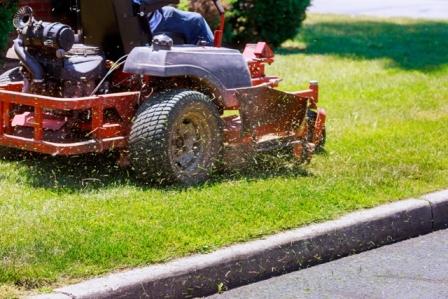
Many maintenance teams are required to do seasonal maintenance. As the cool spring breezes give way to the hot days of summer, it’s time to start planning your facility’s summer maintenance checklist. Being proactive about summer maintenance will keep your property and assets protected in both hot and humid weather.
Maintenance Management for Summer
Indoor Summer Maintenance
While you may be focused on the warm weather outdoors, there are several indoor maintenance management tasks you should complete before and throughout the summer months. HVAC maintenance is likely at the top of the list of summer preventive facility maintenance. The worst time for an air conditioning unit to malfunction is in July or August. You want to prevent this at all costs by completing preventive maintenance tasks. Other areas of indoor maintenance management for summer include plumbing, health and safety, electrical, and energy.
HVAC Maintenance
- Replace the air filters.
- Check your thermostats—set a target cooling temperature and replace or upgrade them if needed.
- Remove dirt and sludge build-up on outdoor units, which can degrade the parts, create an odor, or distribute allergens.
- Clean the coils.
- Check for any air leaks or dripping, which can indicate a problem with the air intake or coolant tank.
Plumbing
- Complete plumbing system inspections, checking for leaks and chipped sealants.
- Investigate any odd odors that may indicate must, mold, mildew, or other irritants. These may be resulting from poor ventilation or leaks.
- Prevent or stop mold and mildew by removing any existing spots and install dehumidifiers as needed.
Health and Safety
- Inspect smoke and CO2 alarms and replace the batteries.
- Clean fireplaces.
- Refill fire extinguishers to prevent or mitigate fire damage.
- Repair or replace light switch faceplates and ceiling tiles.
- Steam clean tile and carpeting, and replace upholstery.
- Evaluate all of your maintenance procedures, including security systems (both equipment and personnel), injury reporting, evacuation plans, hazard control plans, and safety training.
Electrical
- Inspect, repair, and/or replace appliances as needed.
- Look for anything that could pose a fire hazard in the hot, dry summer months.
Energy
- Replace any poor window and door seals to keep cold air in and warm air out.
- Repair or replace any cracked or broken windows.
- Calibrate automatic lighting systems for longer days to save energy.
Outdoor Summer Maintenance
As you’ve probably guessed, a number of tasks on your summer maintenance checklist involve outdoor property maintenance at your facility. Not only do organizations want their exterior to look nice, they also want to prevent major repairs or damage whenever possible. While completing outdoor maintenance work, the maintenance team should make sure they apply sunscreen at least once every two hours to avoid sunburn, and aim to drink an ounce of water every fifteen minutes while outside in the heat. Here’s what you should do outdoors to keep your property clean and safe all summer long.
Exterior Building Maintenance
- Clean gutters, downspouts, and chimneys.
- Inspect roofing and make any necessary repairs.
- Update outdoor lighting.
- Repair cracks in masonry or foundation.
Pest Control
- Keep an eye out for signs of pests, including holes in siding, walls, floors, or wood, shredded material to indicate nesting, damage to plants, droppings, and grease marks.
- You should look for these signs at the beginning and end of summer if you live in a cooler climate or year-round if you live in a warmer climate.
- Fill in any gaps or cracks and spray the appropriate deterrent around the entire building’s exterior.
- Clean up any forgotten spills that may attract ants or flies.
- Termite infestations cause the most damage of any pest by far. Eliminate them immediately, and have a professional conduct a termite inspection annually.
- Small pests such as ants, flies, spiders, and bees may be easier to get rid of than larger pests.
- Larger pests such as rats and mice will likely require the assistance of an outside professional to remove.
Landscaping
As with other seasons, summer preventive facility maintenance also includes landscaping tasks. Keep your property looking pristine by:
- Cutting the lawn.
- Pruning bushes, removing brush, and pulling weeds.
- Setting up and programming your sprinkler or irrigation system.
- Assessing any slopes to ensure they provide proper water drainage.
- Spreading mulch or fertilizer where needed.
Hardscaping
Finally, a summer maintenance checklist should include “hardscaping” tasks, which are closely related to landscaping, but involve hard surfaces and materials rather than plants and soil. Be sure to:
- Pressure-wash commercial patios, sidewalks, and siding.
- Repair cracks or holes in sidewalks and parking lots, and resurface them as needed.
Maintenance Management for Summer with FTMaintenance
Computerized Maintenance Management System (CMMS) software such as FTMaintenance can help you plan ahead for all of your summer maintenance tasks. The ability to create customized preventive maintenance schedules ensures you won’t miss any tasks or fall behind. Seasonal maintenance tasks can be scheduled in the software so you can “set them and forget them”. If unexpected emergency repairs do come up, don’t worry, FTMaintenance handles corrective maintenance, too. Contact us if you have any questions or schedule a demo to learn more.


Recent Comments